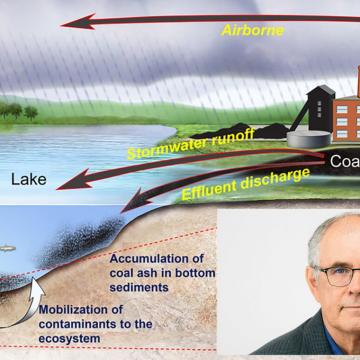-
NewsDuke University scientists have received a five-year, $2.6 million grant from the National Institute of Environmental Health Sciences (NIEHS) to study molecular mechanisms that can help our bodies fight respiratory inflammation caused by air pollution.
-
NewsA new Duke University study finds that municipal waste incinerators' legacy of contamination could live on in urban soils.
-
NewsPeople in areas where drinking water is contaminated with PFAS often want to know their PFAS blood levels but have trouble gaining access to reliable testing, which traditionally involves having their blood drawn by a medical professional.
-
NewsBrian R. Silliman, Rachel Carson Distinguished Professor of Marine Conservation Biology at Duke University’s Nicholas School of the Environment, has been elected a Fellow of the Ecological Society of America (ESA).
-
-
NewsThe National Science Foundation and the Paul G. Allen Family Foundation have awarded a $1.2 million grant to support a new initiative aimed at boosting ecosystem restoration and climate resilience along North Carolina’s coast.
-
NewsMalaria control programs in Amazonian Peru helped reduce the incidence of the deadly parasitic disease by 78%. That is, until the programs ceased to operate.
-
News72% of Earth’s largest companies have pledged to reduce their plastic waste. A new study surveys what they’re doing (or not) to fulfill those promises.
-
NewsA new analysis by researchers from 15 institutions evaluates barriers that have hindered the implementation of early warning systems intended to help local health officials predict and proactively respond to outbreaks of climate-related diseases in the Tropics. The researchers use knowledge and tools from the field of implementation science to propose a four-step, science-based framework for overcoming these barriers and enhancing the success of the early warning systems.
-
NewsThe five-year grant renewal will support five new or newly refocused research projects investigating the long-term health impacts of early-life exposures to polycyclic aromatic hydrocarbons (PAHs) and toxic metals such as lead, which are two of the most common classes of hazardous contaminants found today in areas with a legacy of industrial pollution.
-
NewsToxins in lake bottom may become available to food web
-
NewsRewetting and restoring 250,000 acres of southern pocosin peatlands that had been drained for farming but now lie fallow could prevent 4.3 million tons of climate-warming carbon dioxide, now stored in their soils, from oxidizing and escaping back into Earth’s atmosphere each year, a Duke University study shows. That amount equals 2.4% of the total annual reductions in CO2 emissions needed for the United States to be carbon neutral by 2050.
-
NewsResearchers at Duke University have received a $248,000 grant from the U.S. Environmental Protection Agency to study PFAS exposure risks in the home environment.
-
NewsFirefighters have a 9 percent higher risk of being diagnosed with cancer and a 14 percent higher risk of dying from the disease than the general adult U.S. population, according to studies by the National Institute of Occupational Safety and Health and other agencies.
-
NewsKate Hoffman, an assistant research professor at Duke University’s Nicholas School of the Environment, has received a $3.4 million grant from the National Institutes of Health to study the impact of early-life exposures to semi-volatile organic compounds (SVOCs) on neonatal and early childhood immune function.












